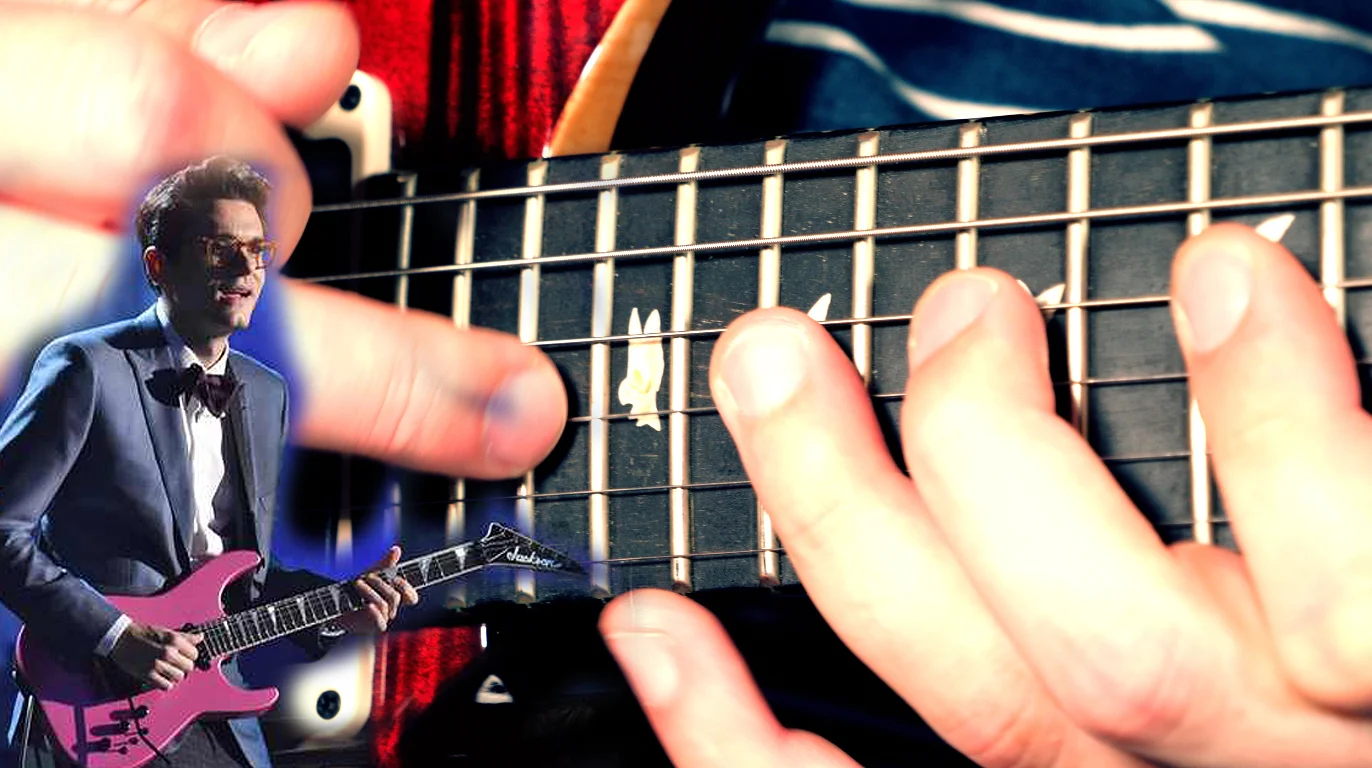Blazing Trails
To be a pioneer can be a conscious or subconscious decision. In September of 1970, Jimi Hendrix died. Teenage Joe Satriani got the news while at high school football practice, and promptly walked up to the coach and quit the team. Highly distraught and newly possessed, his goal was set, and Satriani began his journey. One pioneer died, and another was realized.
An Unlimited Arsenal
Satriani’s very specific category of guitar playing has few masters and many students. The standout gurus consist of, but are not limited to: Joe Satriani, Steve Vai, John Petrucci, Paul Gilbert, Vinnie Moore, and Guthrie Govan. This style has expanded on virtually every standard guitar technique, and produced numerous new ones. These include legato, two-handed tapping and arpeggio tapping, volume swells, artificial harmonics, and extreme whammy bar effects, among others. The reason I enjoy this style of guitar playing so much is because it requires dedication, originality, and is ever-evolving. This style in particular is always going to have the bar set higher, unlike other styles and genres of guitar playing, which will generally move in a horizontal fashion. The epitome of mastering an instrument -- being able to play this modern virtuosic style with ease -- is to play in any other style with ease. It is uncomplicated to tell based on the names I mentioned previously that these players can do anything on their instrument, and that is something to be respected.
On the Shoulders of Giants
I like to think of modern virtuosic guitar playing as every genre thrown into a melting pot and blended into one. The roots can be traced back to the likes of Django Reinhardt, Wes Montgomery, Allan Holdsworth and Charlie Christian, as well as Jimi Hendrix, Eric Clapton, Jimmy Page, Jeff Beck and Ritchie Blackmore; very different guitar players, but each with their own sound and techniques submitted to the mix. The list of players who contributed later on throughout time and continue to contribute is extremely long. These are all players who have used techniques that are now popular in modern virtuosic playing, but on which players like Joe Satriani have expanded on.
Alienation Through Differentiation
Taking a listen to Satriani, it is easy to hear how his sound differs from a vast majority of other guitar players. One of his trademark compositional traits is to implement the pitch axis theory, which he applies with a variety of harmonic modes. During fast passages, Satriani favors a legato technique (achieved primarily through hammer-ons and pull-offs), which yields smooth, flowing runs. While Satriani didn’t invent legato, he certainly paved the way for its evolution, which is an important aspect of the modern virtuosic style – evolution. Each player’s tone contributes heavily to the sound of the legato as well, slightly varying by the type of guitar, the amp, and the effects.
Controlled Chaos
One of the most difficult things to do as an improving guitarist is regulating the amount of effects pedals and boards used during practice. This means no hiding behind a wall of delay and reverb while you rip through your scales at 200 beats per minute. It is always tempting to lean toward stomping all the pedals on your board, because after all, guitarists like Steve Vai and Joe Satriani certainly have a little more going on than a bit of overdrive and some reverb, so why shouldn’t you? The difference, though, is they can control and manipulate those effects to their advantage, rather than depend on them to achieve their tonal goals. In practice, it is essential to simplify your sound in order to perfect the core of your melodic ideas and playing technique, and then build on that foundation. This is not to say you shouldn’t be a mad scientist from time to time, because in the end, playing guitar should be fun. Tom Morello and Mike Einziger wouldn’t be the guitar icons they are today without their signature, over-effected guitar solos and riffs.
Wah-Wah, Why Why?
In general, I am not a fan of the wah wah pedal. Don’t get me wrong, I think songs like Voodoo Chile (Slight Return), Surfing with the Alien or Bulls on Parade are some of the greatest things ever to come out of a guitar, and they’re each a direct result of the wah wah effect. My problem is for every amazing wah-influenced song, there are probably 5,000 not-so-great ones. I’m sure the same could be said for delay and other effects too, but the wah wah effect is such a distinct and prevalent sound that it is easy to abuse and overuse it, often times to cover up what would otherwise sound like muddled nonsense. All that said, expression through this particular type of modulation is a staple of the modern virtuosic style. A wah pedal is a voice, and is used by Satriani and the like to play more than just hyper-speed, sloppy pentatonic riffs. It is a necessary tool in any player’s arsenal, but again; it is best utilized as a decoration than a crutch in melodic expression. Listen to “The Souls of Distortion” from Satriani’s 2004 album entitled Is There Love in Space? to hear how he uses a wah wah effect to add a distinctly unique rhythmic element to what would otherwise be a simple (on paper) melody.
Plug and Play
While there isn’t one defining technique of modern virtuosic guitar playing, there is definitely a defining approach to constructing a solo or improvising in this vein. Notably, a jazz approach to choosing notes that outline a chord is fused with a rock approach of implementing bends, vibrato, and legato with an overdriven tone. Alterations are distinguished through the methods in which these chord tones are chosen and the ratio of jazz to rock mediums and emphasis. For example, Satriani has a tendency to prefer a more classic blues/rock majority, sprinkling in elements of jazz theory throughout. Listen to the solo on “House Full of Bullets” from his 1998 album entitled Crystal Planet to hear his methods in action.
Wham, Bam, Thank You Ma’am
Another standout tactic of modern virtuosic playing is whammy bar manipulation. Utilized most notably by Jimi Hendrix in the early days of electric rock guitar, the whammy bar is now used in the most expressive ways possible by the titans of today’s guitar world. Again, Satriani is a trendsetter and has managed to make the high-pitched artificial harmonic whammy dive one of his trademark climax elements in his improvisations as well as his written solos. At the two-minute mark in the song “The Extremist” from the album of the same title, you can hear eight clear examples of why Satriani has been dubbed an alien from space sent to our world to spread his alien music through massive whammy bar dives.
Shred With a Purpose
Let’s face it — to a majority of people, the names Joe Satriani, Steve Vai, Paul Gilbert, and Guthrie Govan are synonymous with face-melting shred. This is a common misconception of guitar heroes who are not directly in the public eye, and it bears clarifying that modern virtuosic guitar playing is so much more than aggressive flurries of notes and unbridled amounts of distortion. This idea goes back to the framework of controlling the chaos. While some genres of music rely solely on a boosted midrange and countless bars of 64th notes, modern virtuosic playing is about utility just as much as it is about expression. With that in mind, it is intrinsically impossible to express an effective melodic idea if you only have one tool to do so. Yes, fast passages are almost always present in many of Satriani’s songs, but by listening to an entire album or even discography of an artist like Satch, it is plain to hear just how much he holds back in order to achieve coherence and be successful in conveying his musical ideas to the listener in a digestible manner. In the song “It's So Good” from Satriani’s 2006 effort called Super Colossal, we can imagine just how much Satriani could have done as opposed to how much he actually does in regard to his note selection and lack of notes in the verses. This song appears on the same album as the atmospheric “Cool New Way” where Satch takes a nearly two-minute long solo, presenting everything his decades of practice and experience have afforded him in a perfectly constructed blend of slow and fast, simple and complex, soulful and technical playing. In the end, this is truly the essence of modern virtuosic playing: the ability to use your knowledge in synthesis with your soul to convey ideas on the guitar as a painter uses colors and internal vision to paint a piece of art.
Practice Makes Cool
When you listen to a musician like Satriani, you have to understand that while it took him years to achieve this level of skill, you too can reach similar heights if you have the desire. Regardless of your work ethic, online lessons, private instructors, or other influences will no doubt tell you in your life about how you should practice and what you should strive for. Here’s what those sources of wisdom may neglect to tell you: everyone learns, thinks, and operates at a different speed and on different fuel. An amazing guitar teacher I had in college named Dave Tronzo told me I’m never smarter for not knowing something. Take information, suggestions, practice routines, and playing tips where you can get them, but don’t ignore your own thoughts and aspirations. Practice based on your own feelings. Don’t embark on the Steve Vai 12-hours-per-day practice regimen if you want to become a great guitar player — that path is limited to a certain type of person, and their name is probably Steve Vai. Instead, find the three things from that routine that resonate most with you, apply them to your practice for a few days, and see if you feel good about your progress. If not, look somewhere else for inspiration. The great thing about the world we live in is there is a treasure trove of information available at the click of a mouse. If you’ve ever tried to walk in somebody else’s footsteps in the sand on a beach, it never quite fits, does it? Some sand will always fall from the edges. The same is true for learning guitar. Take influence where you find it, and use it to make your own footprints on the guitar world.
Heroes Get Remembered
Satriani released his first EP in 1984, marking a period of over 30 years he has been creating and releasing music, and he is still sitting on the throne of the guitar king. For most people, including myself, it is daunting to think about doing something for tens, hundreds, or even thousands of hours in order to reach a goal. So here’s a tip: don’t. Think about your more immediate guitar goals you hope to achieve, and start there. Don’t pine over imminent failure or the legitimacy of your skills. In most cases, creativity is most easily sparked by a complete absence of anxiety, and being a creative guitar player is far more important than being a “good” guitar player. Jimi Hendrix wasn’t worrying about what people would think of Purple Haze when he wrote it, and Stan Lee didn’t care if you would appreciate The Fantastic Four when he drew it. Both of these artists threw caution to the wind with the primary goal of creating something they believed was awesome. As a result, each product’s authenticity resonated with everyone it reached. When experiencing a real piece of art, or an amazing piece of music, you feel its genuineness. When something is created purely for the dollars and without passion, you feel that too. Use Satriani and company as inspiration, not measurements against yourself.
Legends Never Die
In short, modern virtuosic playing is a technically demanding, ultra-expressive, and ever-growing style that is easily distinguishing the best guitar players in the world, and while there are countless new virtuosos emerging all the time, the roots of this style will forever drink from the pool of Satriani.
































No stairway…? Denied!